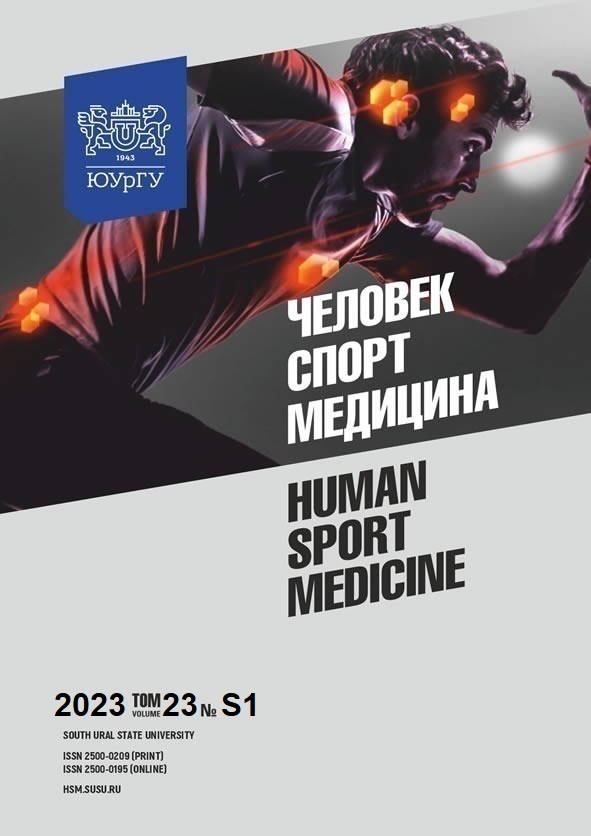BRADYCARDIA AND HEART RATE VARIABILITY IN ATHLETES
Abstract
Aim. This paper was aimed at identifying the relationship between heart rate (HR) and the MxDMn range at rest and during orthostasis in biathletes with bradycardia and, thus, confirming their diagnosis. Materials and methods. Dynamic studies of heart rate and heart rate variability at rest and during orthostasis involved 59 biathletes with bradycardia from 16 to 20 years of age. Heart rate variability was studied with the “Varicard-2.52” device and the “Iskim-6” and “Varicard MP” programs. A total of 486 measurements were performed on athletes during different periods of training. Results. The results obtained show that, in athletes, bradycardia of less than 50 and especially 40 bpm, combined with a small MxDMn range at rest and a pathological response to orthostasis (increased HR results in an increase in the MxDMn range instead of its decrease), is a pathological phenomenon of HRV and a symptom of overtraining. Individual dynamic studies of HRV in athletes revealed the transition of bradycardia from one level to another, which was associated with unstable cardiac regulation. The relationship between pathological bradycardia and cardiac arrhythmia, including life-threatening arrhythmias, was shown. Conclusion. HRV studies are important for describing bradycardia as a pathological phenomenon. Evaluation of bradycardia based on HR data alone, regardless of the MxDMn range, does not make it possible to determine its true state. With unstable bradycardia, the appearance of pathological HRV can determine the boundary of impaired recovery. Pathological bradycardia can contribute to overtraining, life-threatening arrhythmias, and an increased risk of sudden cardiac death among athletes.
References
References on translit
Copyright (c) 2023 Human. Sport. Medicine

This work is licensed under a Creative Commons Attribution-NonCommercial-NoDerivatives 4.0 International License.















